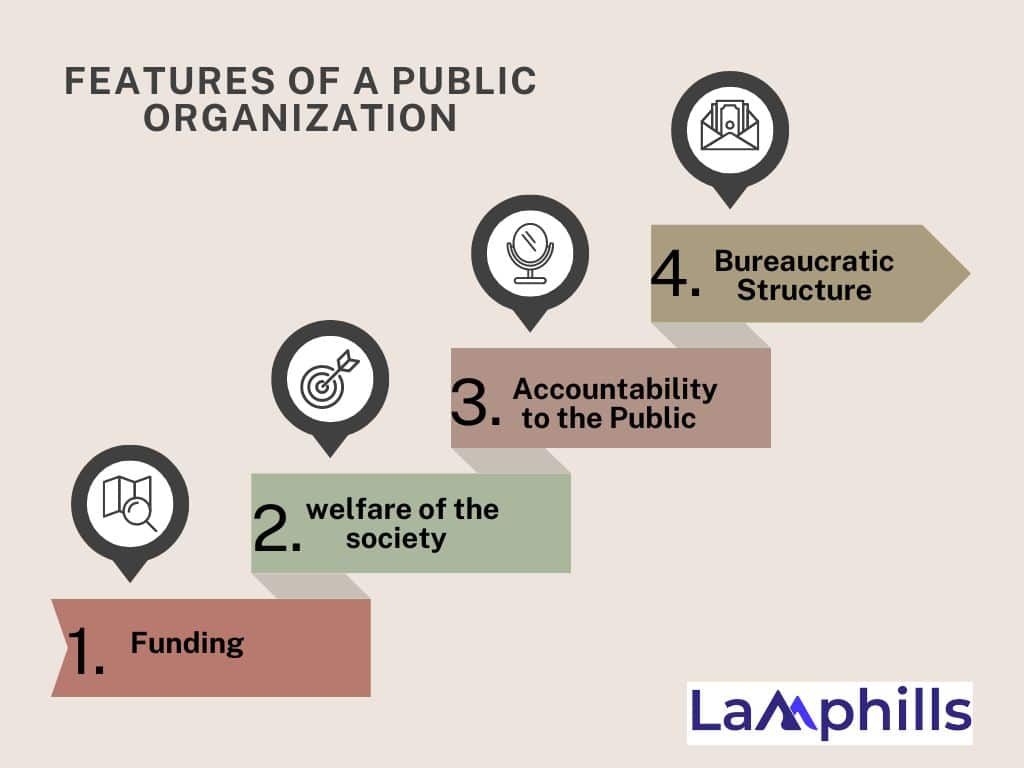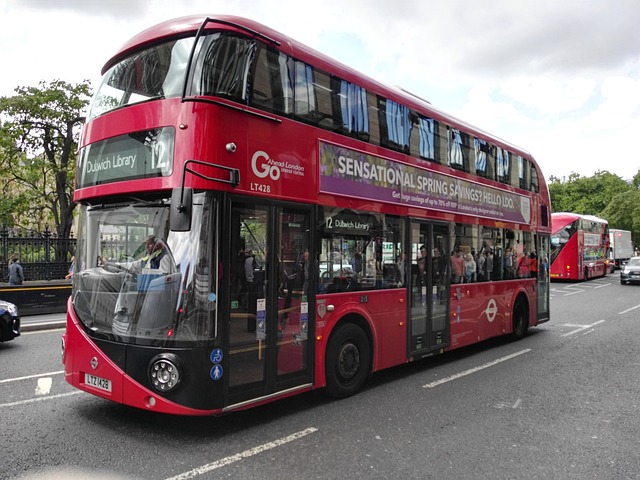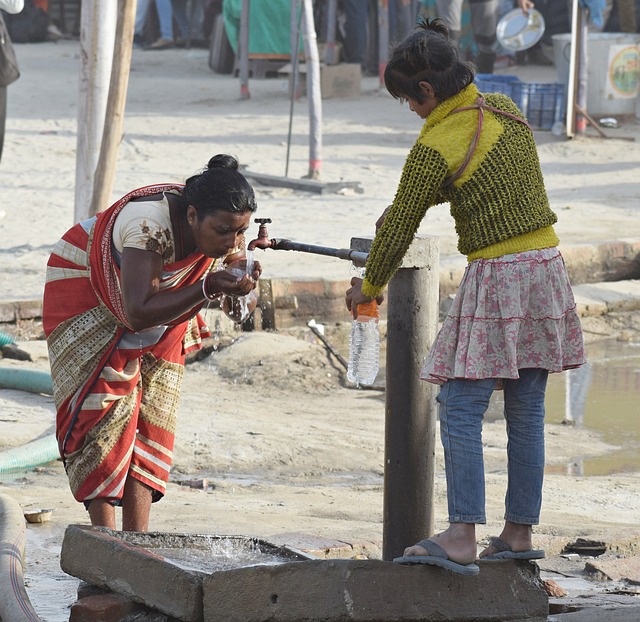Every day, we interact with public organizations even without realizing how much they contribute to our lives. From the clean water we drink to the reliable mail delivery service, public organizations ensure the smooth functioning of society.
Every public organization has a specific role that is aimed at helping the general public. Managed and funded by the government, these organizations offer services that are considered important for the people.
The business world can be divided into two main types: public and private. And anyone interested in business should understand the differences in how each is funded.
In this article, we’ll explain the public sector, how it operates, and how it’s funded. We’ll also provide clear examples of public organizations, like government agencies, schools, and hospitals, to help you better understand how they function compared to private businesses.
Whether it’s through the services they provide or the support they offer in emergencies, public organizations play a critical role in making life easier for everyone.
Let’s get started.
Key Points
- Public organizations serve everyone. They provide essential services like education, healthcare, and public safety, making life easier for everyone, regardless of their ability to pay.
- The government funds Public organizations through taxes, meaning their main goal is public welfare, not making money.
- Public schools, hospitals, police departments, and public transportation are all examples of public organizations that shape our daily lives.
- Public organizations are closely monitored by citizens and the media, ensuring transparency and trust in how they operate.
- From clean water to affordable housing and reliable electricity, public organizations touch nearly every aspect of community well-being.
What Is a Public Organization?
I still remember my first time working with a public organization. Just after finishing university, I got an internship at a government agency. I didn’t fully understand how public organizations worked back then, but this experience taught me much about how they differ from private companies. Public organizations, often connected to the government, are important in shaping society.
A public organization is an entity operated and funded by the government to serve the interests of the general public. Unlike private organizations, which focus on profit, public organizations prioritize providing essential services to everyone, regardless of their ability to pay. These organizations are often at the local, state, or federal level, and their purpose is to meet the public’s needs in areas like education, healthcare, safety, and infrastructure.
For example, when you use public transportation to get across town, you benefit from a public organization that ensures people have affordable ways to commute. It’s not about making a profit; it’s about making the city more accessible to all its residents.
What is The Public Sector?
The public sector refers to the part of the economy owned and operated by the government. It includes organizations and services that are funded by taxes and exist to serve the public. Unlike private companies, which aim to make a profit, public sector organizations focus on providing essential services that benefit everyone, such as education, healthcare, public safety, and transportation.
For example, public schools, police departments, and public hospitals are all part of the public sector. These organizations ensure that basic needs like education, safety, and health are accessible to everyone, regardless of their financial situation. The public sector operates at different levels, including local, state, and national governments, and its main goal is to improve the quality of life for the public.
Key Features of a Public Organization

Public organizations are an important part of our lives, providing essential services like education, healthcare, and public safety. They operate differently from private companies because their main goal is to serve the public rather than make money.
To understand how they work, let’s look at the key features: their objective, how they are funded, their competition, and their focus.
#1. Funding
Public organizations get most of their money from the government. This means they use taxpayer money to run their operations, and their budget decisions are carefully controlled to ensure transparency.
I remember going to meetings where every spending decision had to be explained in detail, which is very different from private companies, where the goal is often to increase profits.
#2. Focus on the welfare of the society
Unlike private companies, public organizations don’t aim to make a profit. Instead, they focus on improving society and ensuring services are available to everyone, no matter their income or background. In the projects I worked on, the goal wasn’t to make money but to improve access to education and healthcare for those in need. This really showed me the important role public organizations play in making society fairer.
#3. Accountability to the Public
One thing that stood out during my time in public organizations was how much they are held accountable to the public. Their actions are closely watched by citizens, the media, and through audits. This public oversight ensures they remain open and honest in how they operate. I saw firsthand how public feedback could change decisions, showing how important it is for these organizations to build and maintain public trust.
#4. Bureaucratic Structure
I won’t lie—public organizations can be complicated. There are many steps to go through before a decision is made, which can slow things down. At first, I found this frustrating, but I came to understand that this process is in place to ensure decisions are carefully thought out and fair. While it’s not the fastest way to work, it helps avoid mistakes and ensures fairness.
Understanding the differences between public and private organizations can help you see how they impact our daily lives. To make this easier, I’ve created a simple comparison template. This template will allow you to quickly see how public and private organizations differ in key areas like funding, goals, and services. You can fill it out to get a clearer picture of how these organizations work and serve their communities.
Take a look at the table below and start comparing!
One of the easiest ways to answer questions like “What is a public agency or organization?” is by using examples. Let’s explain some examples of public organizations.
10 Examples of Public Organizations
Public organizations are owned and run by the government, and they get their money from taxes. Here are ten common examples of public organizations that impact our daily lives:
#1. Education
A common example of a public organization is education. Schools, colleges, universities, and other educational institutions are public organizations. The government funds public schools to provide free education to all children, regardless of their family’s income or background. This allows everyone to receive an education without worrying about the cost.
These schools are run by the government at different levels, local, state, or federal, and their goal is to ensure that children learn basic skills like reading, writing, math, and science. The government pays for things like teachers’ salaries, school buildings, and learning materials so students can focus on learning.
Growing up, I attended a public school, which laid the foundation for my future. Public education plays a big role in shaping a country’s future because it gives every child a chance to learn and grow, no matter where they come from. It helps build a stronger community by ensuring everyone has the knowledge and skills to contribute to society.
#2. Law Enforcement

Image by pixabay
Law enforcement, like the police, is an excellent example of a public organization. It’s a government-run service that keeps people safe by enforcing laws and protecting the community. Police officers work to prevent crime, respond to emergencies, and help maintain order in society. For example, if there’s a robbery or a car accident, it’s the police who arrive to help. They also handle everyday tasks like traffic control and ensuring that people follow laws that keep everyone safe.
Since law enforcement is a public organization, it is funded by taxes and works to serve the entire community, not to make money. Its goal is to protect people and ensure that everyone follows the rules that keep society functioning smoothly.
#3. Justice
The justice system is responsible for maintaining law and order, ensuring fairness, and protecting people’s rights. The courts, judges, and law enforcement agencies work together to ensure that laws are followed and that everyone is treated fairly, no matter their background or status.
The government funds the justice system, which makes it available to everyone. If someone commits a crime, they face the consequences through the justice system. The system also helps resolve disputes, whether between individuals, companies, or the government itself.
In short, the justice system ensures fairness and equality in society, ensuring everyone gets a fair chance and that laws are applied equally to protect people.
#4. Military
The military is a public organization responsible for protecting a country and its people from threats within and from other nations. It is funded by the government and made up of different branches, such as the Army, Navy, Air Force, and Marines. The military helps keep a nation safe by defending its borders, responding to emergencies, and sometimes assisting in disaster relief.
The military does not operate to make money. Instead, its mission is to protect the country and maintain peace and security. People who serve in the military are trained to handle dangerous situations, and they work under the government to ensure the safety of all citizens. For example, when natural disasters like floods or hurricanes strike, the military often helps by delivering supplies or rescuing people in danger.
#5. Healthcare

Image by Pixabay
Public healthcare services, like public hospitals and clinics, are run by the government to provide medical care to everyone, regardless of their ability to pay. These services are funded by taxpayers, meaning that the government covers most of the costs, so people don’t have to worry about large medical bills.
In many countries, public healthcare includes services like doctor visits, surgeries, emergency care, vaccinations, and even mental health support. Public hospitals, for example, are there to treat anyone who needs medical help, whether they have insurance or not.
The goal of public healthcare is to ensure that everyone in the community has access to the medical services they need to stay healthy. This is especially important for people who can’t afford private healthcare but still deserve quality treatment. Public healthcare organizations make sure that no one is left without care when they need it most.
#6. Electricity
In many places, electricity is provided by government-run agencies or companies to ensure everyone has access to this essential service. Public electricity organizations generate, distribute, and maintain the electrical power that lights up homes, schools, hospitals, and businesses. Their main goal is to make sure that people have a reliable supply of electricity, not to make a profit.
For instance, in some countries, there are public electricity companies that handle everything from producing electricity at power plants to delivering it to our homes through power lines. These organizations are responsible for fixing any outages or issues, ensuring that people can live comfortably and businesses can operate smoothly. Since everyone depends on electricity, the public organization makes sure it’s affordable and available to all.
#7. Public Transit

Image by Pixabay
Public transit refers to systems like buses, subways, and trains that are run by the government to help people move around cities or towns. Unlike private transportation, like taxis or ride-sharing services, public transit is funded by taxpayers and is meant to provide affordable travel options for everyone.
Many people, including myself, rely on public transportation to get to work or run errands without the hassle of driving and parking in busy cities.
Public transit helps reduce traffic and pollution, making it easier for people to get to work, school, or run errands without needing a car. Because it’s a public service, the goal is to ensure everyone has access to reliable transportation rather than making a profit. This makes it a key part of a well-functioning city or town, especially for people who don’t have access to private vehicles.
#8. Public Roads
These are the roads we drive daily, whether to go to work, school or run errands. Public roads are built, maintained, and managed by the government to ensure everyone can travel safely and easily. The funding for public roads comes from taxes, meaning we all contribute to keeping the roads in good condition.
Without public roads, getting around would be difficult, and we might have to pay every time we use a road. Public roads are a crucial part of our transportation system, allowing for the free movement of people and goods across cities and towns. They also make it possible for emergency services, like ambulances and fire trucks, to reach us quickly when needed.
In short, public roads are there to serve everyone, making transportation safer, easier, and more accessible.
#9. Housing
Housing as a public organization refers to government-funded programs or agencies that provide affordable places for people to live. These organizations are designed to help individuals and families who cannot afford private housing, offering them safe and stable homes. Public housing can take different forms, such as apartment complexes or houses owned and managed by the government.
For example, in many cities, the local government runs public housing programs where low-income families can apply for apartments at a reduced rent. These programs aim to ensure that everyone has a roof over their head, regardless of their financial situation. Public housing organizations are essential because they help reduce homelessness and ensure more people can afford decent living conditions.
#10. Water

Image by Pixabay
Access to clean water is a basic human need. We all need it to survive, and the government manages it to ensure everyone has access to clean, safe water. Public water organizations are responsible for delivering clean drinking water to homes, schools, and businesses and treating wastewater to keep the environment safe.
These organizations are funded by taxes or utility bills, not by making a profit. Their main goal is to provide a vital service, clean water so that people can use it daily for drinking, cooking, and cleaning. Without these public organizations, ensuring that everyone has safe water would be much harder, especially in large cities or rural areas.
Every time I turn on the tap, I benefit from the hard work of these organizations that ensure we have safe water to drink and a clean environment.
In short, public water organizations help protect our health and keep our communities running smoothly by managing the water we need fairly and affordably.
Why Public Organizations Matter.
Public organizations are important because they provide services that benefit everyone, not just a few people. They are run by the government and funded by taxes, so they are designed to help the public rather than make money. Without public organizations, many of the things we rely on daily would be difficult or expensive to access.
For example, public schools give children the chance to get an education for free, which is important for their future. Meanwhile, public hospitals offer healthcare to everyone, no matter how much money they have. Public parks give us spaces to relax and enjoy nature, and public transportation helps people move around the city easily and affordably.
Public organizations are there to ensure everyone has what they need, like clean water, education, and safety. They help communities run smoothly and ensure no one is left out just because they can’t afford certain services.
This is why public organizations matter; they look out for the well-being of all people. Without these services, many things we take for granted would become costly and difficult to access.
Final Words
In conclusion, public organizations are the backbone of many services we rely on daily. From schools and hospitals to fire departments and public parks, these institutions exist to serve the community and ensure that everyone has access to essential services.
Whether through education, safety, or infrastructure, public organizations are fundamental to society’s well-being and progress.
Frequently Asked Questions.
What is a public and private organization?
A public organization is owned, run, and managed by government or state agencies. Individuals, groups, or businesses own, run, and manage a private organization.
What is a private organization?
A private organization is a group not run by the government and does not receive money from public sources. These organizations can include different types, like private companies (both for-profit and nonprofit), private volunteer groups, and private research centers.
What is an example of a private organization?
- Sole proprietorships: These can be plumbers, technicians, contractors, developers, and designers.
- Partnerships: These are businesses like legal firms, accounting, tax services, and dental practices.
- Privately owned companies: This includes businesses in the hospitality, leisure, retail, and food industries.
What is an example of one public organization?
An example of a public organization is the police department. Public organizations like the police, fire department, and public schools are usually funded by local or state taxes and serve the people in their community. Other examples are national parks, public libraries, and public transportation services.
Who is an organization’s public?
An organization’s public is a group of stakeholders interested in a specific issue related to the organization.
Similar Articles
What Does a CRM Manager Do? Key Duties and Best Practices
Top 5 Brand Pillars: Why Your Business Can’t Afford to Ignore Them!
What Is Consumer Public Relations?: Key Strategies for Connecting with Your Audience
Public Relations Services: Trusted Public Relations Strategies for Success






